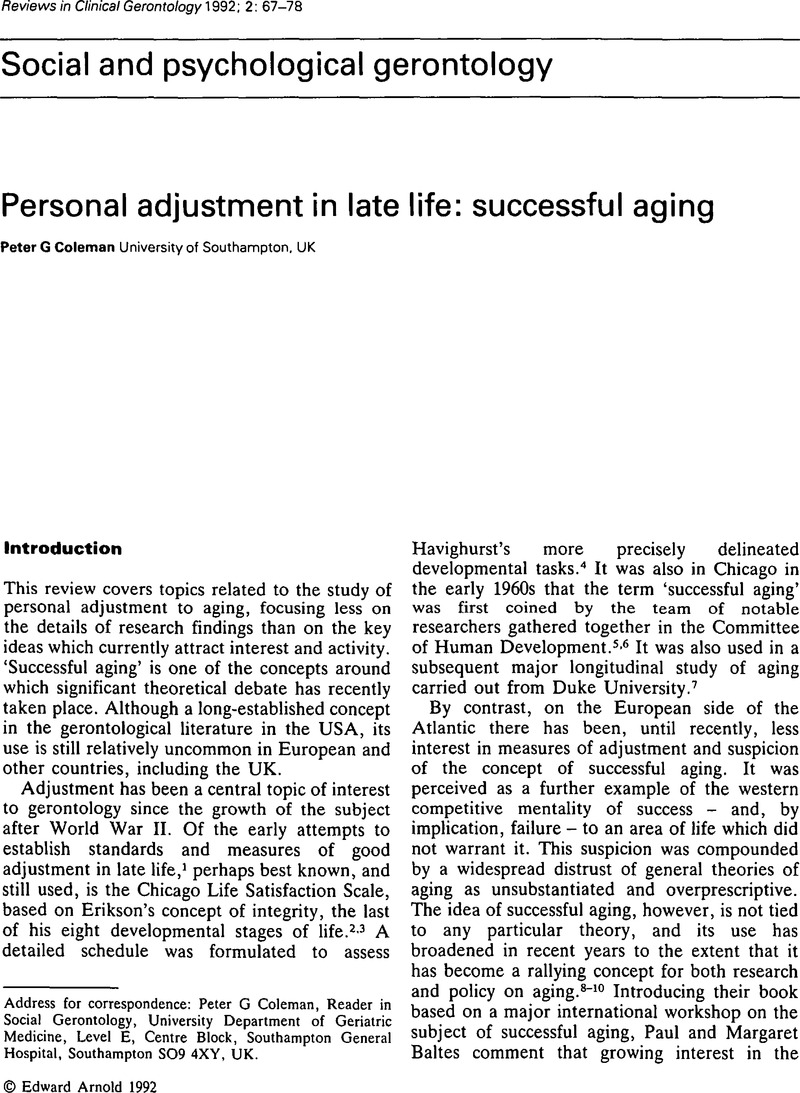Crossref Citations
This article has been cited by the following publications. This list is generated based on data provided by Crossref.
THUEN, MARIT HEGG REIME & KARI SKRA, FRODE
1997.
The effect of widowhood on psychological wellbeing and social support in the oldest groups of the elderly.
Journal of Mental Health,
Vol. 6,
Issue. 3,
p.
265.
Kocken, P.L
and
Voorham, A.J.J
1998.
Interest in participation in a peer-led senior health education program.
Patient Education and Counseling,
Vol. 34,
Issue. 1,
p.
5.
Von Dras, Dean D.
and
Blumenthal, Herman T.
2000.
Biological, Social-Environmental, and Psychological Dialecticism: An Integrated Model of Aging.
Basic and Applied Social Psychology,
Vol. 22,
Issue. 3,
p.
199.
Kroger, Jane
2002.
Identity Processes and Contents Through the Years of Late Adulthood.
Identity,
Vol. 2,
Issue. 1,
p.
81.
Coleman, Peter
McKiernan, Fionnuala
Mills, Marie
and
Speck, Peter
2002.
Spiritual belief and quality of life: The experience of older bereaved spouses.
Quality in Ageing and Older Adults,
Vol. 3,
Issue. 1,
p.
20.
Nugent, William R.
2004.
A Validity Study of Two Forms of the Self-Esteem Rating Scale.
Research on Social Work Practice,
Vol. 14,
Issue. 4,
p.
287.
Bohlmeijer, Ernst
Roemer, Marte
Cuijpers, Pim
and
Smit, Filip
2007.
The effects of reminiscence on psychological well-being in older adults: A meta-analysis.
Aging & Mental Health,
Vol. 11,
Issue. 3,
p.
291.
Afonso, Rosa Marina
Bueno, Bélen
Loureiro, Manuel Joaquim
and
Pereira, Henrique
2011.
Reminiscence, Psychological Well-Being, and Ego Integrity in Portuguese Elderly People.
Educational Gerontology,
Vol. 37,
Issue. 12,
p.
1063.
Tap, Pierre
2011.
Sexualité, handicaps et vieillissement.
p.
75.
Newman, Andrew
Goulding, Anna
and
Whitehead, Chris
2014.
Contemporary visual art and the construction of identity: maintenance and revision processes in older adults.
International Journal of Heritage Studies,
Vol. 20,
Issue. 4,
p.
432.
Martinson, Marty
and
Berridge, Clara
2015.
Successful Aging and Its Discontents: A Systematic Review of the Social Gerontology Literature.
The Gerontologist,
Vol. 55,
Issue. 1,
p.
58.
Golja, Klara
Daugherty, Ana M.
and
Kavcic, Voyko
2020.
Cognitive reserve and depression predict subjective reports of successful aging.
Archives of Gerontology and Geriatrics,
Vol. 90,
Issue. ,
p.
104137.





